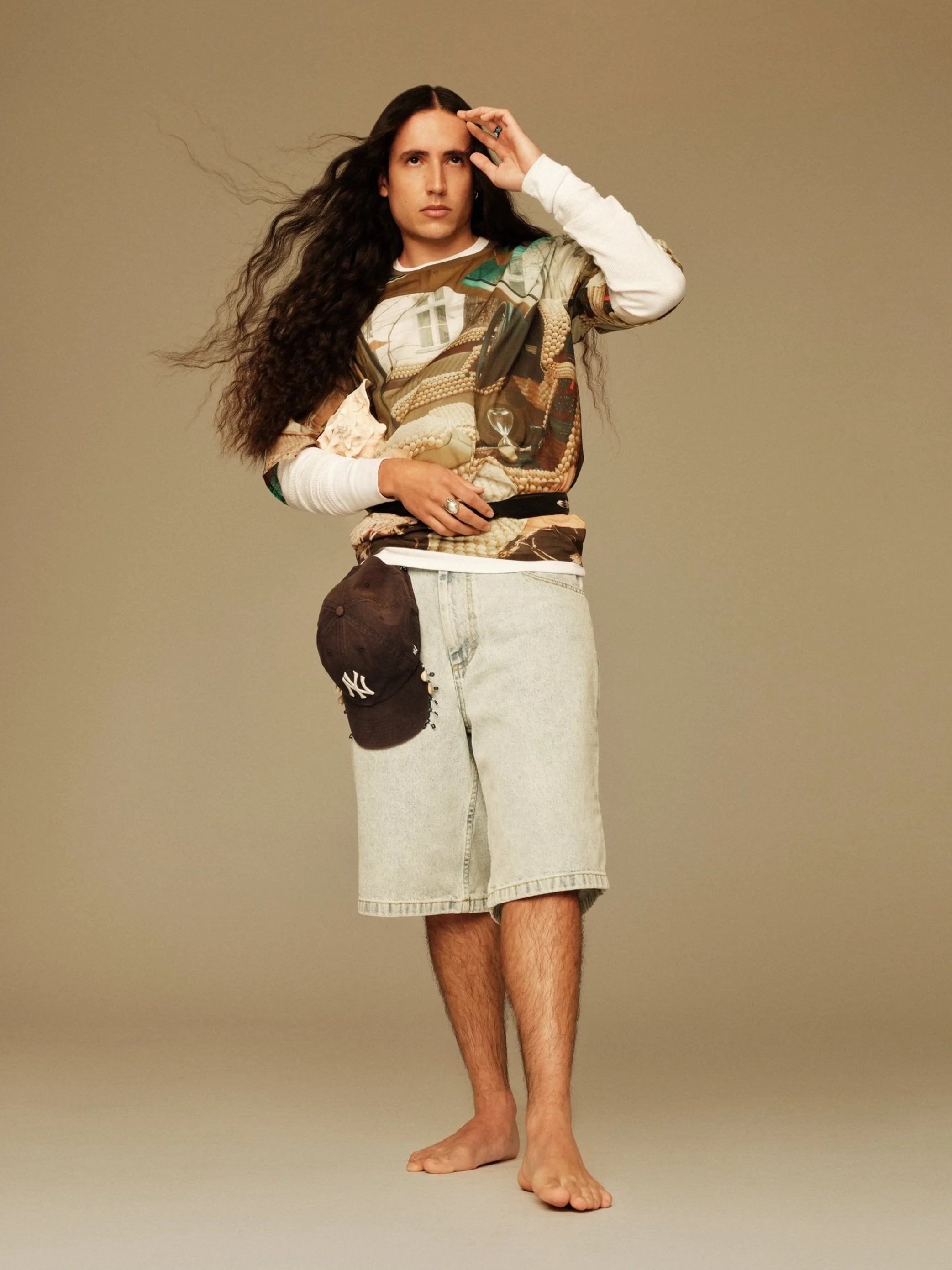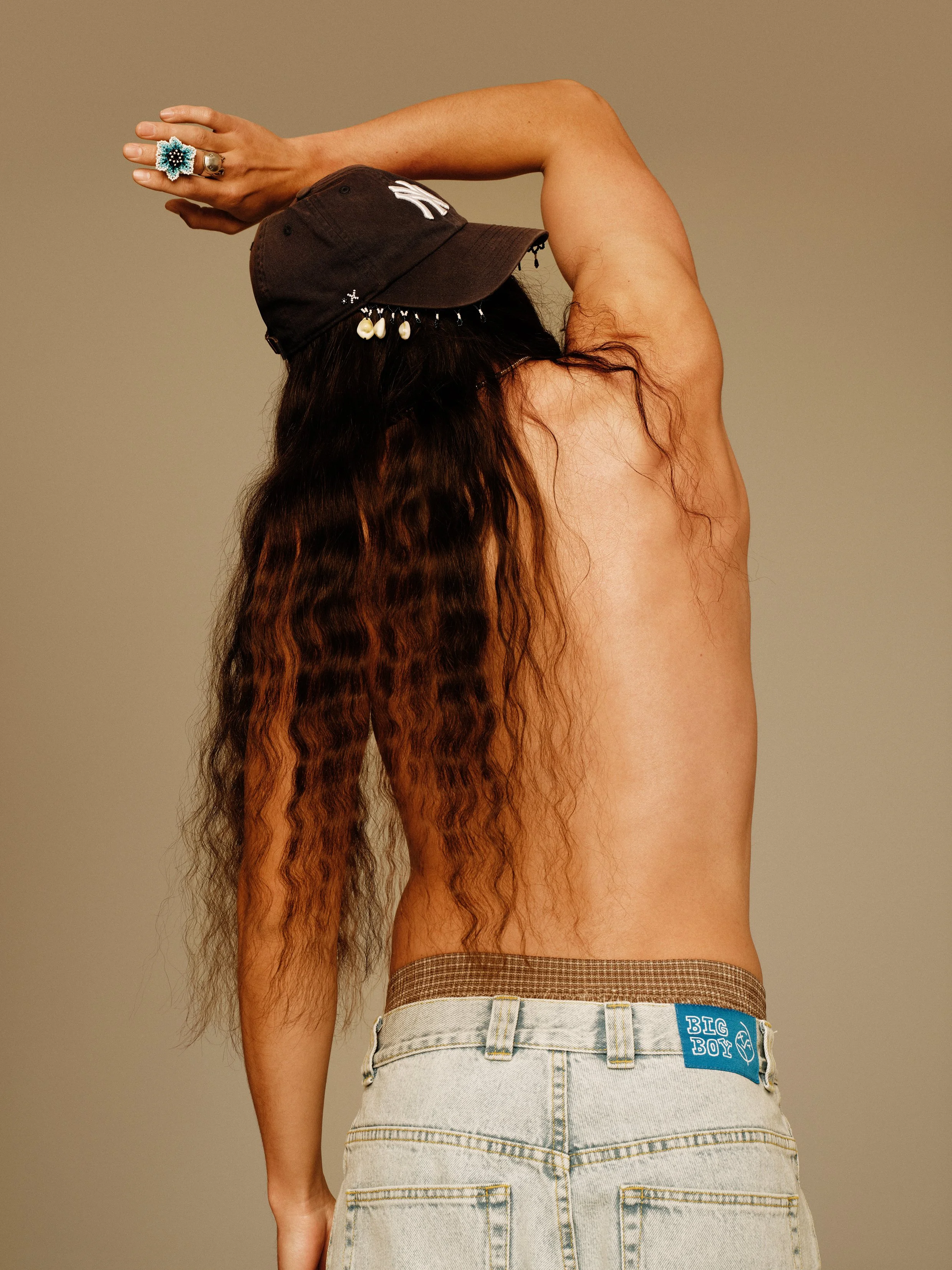For many, activism is a choice—a cause to support, a movement to join. But for Indigenous communities, it’s survival. It’s a fight that has been waged for generations, long before climate change became a mainstream crisis. Few voices embody this intersection of resistance, culture, and justice like Xiuhtezcatl (pronounced “shoe-TEZ-caht”) Martinez.
Martinez is a climate activist, hip-hop artist, and organizer of Indigenous and Mexican descent. He began speaking out about climate change at the age of 6 and addressing the United Nations by 15. As the former youth director of Earth Guardians, he helped shape a global youth movement for climate justice. He also became a plaintiff in Juliana v. United States, a landmark lawsuit holding the U.S. government accountable for its role in the climate crisis.
But beyond activism, Martinez is a storyteller. Through music, writing, and public speaking, he weaves Indigenous knowledge with radical calls for action. His work challenges mainstream environmentalism, urging people to move beyond policy and sustainability toward deeper systems change.
In this conversation, we discuss the role of Indigenous leadership in the climate fight, the limitations of Western activism, and the power of storytelling in resistance. Martinez reflects on his journey—from addressing world leaders to stepping away from the spotlight—and shares his thoughts on where the movement stands today.
JACKET & SHIRT Comme Des Garçons, PANTS Issey Miyake, SHOES Talent’s Own
Khalid Abdel-Hadi: Your activism is deeply rooted in the Indigenous understanding that the Earth isn’t just a resource but a living entity we have a reciprocal relationship with. How do you see Indigenous knowledge reshaping the global climate movement, and what lessons do Western environmentalists still need to learn?
Xiuhtezcatl Martinez: For Indigenous communities, the climate crisis threatens cultural survival. Our lives are inseparable from the land, so defending it isn’t just political—it’s about existence. Unlike Western environmentalism, which is often policy driven, Indigenous activism is lived.
From the Amazon to North America, Indigenous peoples have long resisted an extractive economic model imposed by colonialism. Climate justice isn’t just about emissions; it intersects with gender equity, Indigenous rights, and systemic oppression. For example, fossil fuel projects have been directly linked to violence against Indigenous women, as transient labor camps fuel human trafficking and exploitation.
The climate movement often leans on fear and crisis narratives, but Indigenous leadership reminds us that real activism is about connection, love, and responsibility. Without recognizing these intersections, our movements become fragmented. True change happens when we fight for both people and the planet.
KAH: Growing up in Mexico shaped your worldview, yet you’ve also worked within modern advocacy spaces. How do you balance traditional Indigenous practices with the tools of modern activism, especially in spaces where people in power may be indifferent or performative?
XM: Indigenous resistance has always been tied to culture and spirituality. Movements like the American Indian Movement and Red Power weren’t just political; they were about reclaiming identity, language, and sovereignty. That dynamic continues today.
At Standing Rock, we saw how fossil fuel interests, backed by militarized police, prioritized profit over Indigenous lives. Yet, the resistance was grounded in ceremony and tradition. This balance has always been our strength.
Activism is exhausting, but in Indigenous organizing, relationships sustain us. We don’t just mobilize; we build connections—through ceremony, meals, laughter, and shared joy. That depth makes movements more resilient. As Adrienne Maree Brown says, it’s not just about critical mass but critical connections—how deeply we know and support each other.
SHIRT Eckhaus Latta, JEWELRY Talent’s Own
SHIRT & Shoes Talent’s Own, PANTS JJJJound
KAH: You’ve been involved in this movement since childhood—your speech at age 6 was incredible. But Indigenous youth face unique challenges: systemic neglect, lack of resources, and exclusion from decision-making. How do you see young Indigenous leaders shaping the climate movement, and what support do they need?
XM: I’ve been fortunate to be heard in many spaces, though sometimes it feels like shouting into the void. Speaking at the U.N. General Assembly in 2015, for example, made me question whether those spaces were impactful or performative.
I also recognize my privileges—growing up in the U.S., having a white mother connected to organizing spaces, being multiracial. Many Indigenous youth don’t have those advantages, and their voices go unheard. That’s why it’s crucial to open doors—not just for those palatable to institutions but for those on the front lines of climate injustice.
In 2020, I reflected on the intersection of activism and celebrity culture. I saw activists building massive platforms and wondered if that was what our movement truly needed. I never set out to make a career of activism. I realized I needed to step back from the spotlight and ground my work closer to the land.
Having a platform is a privilege, but it’s not the core of activism. Real change comes from collective action—redistributing power, amplifying others, and making systemic change nonnegotiable.
SHIRT Bless, SHIRT (WORN UNDER) Vintage, SHORTS Polar, HAT & BELT Talent’s Own
KAH: That’s such a crucial point. I think the key is decentering ourselves and making activism as collective as possible. Like you, I believe the U.S. government is responsible for many global injustices. As a Palestinian, I see its role in Palestine, Gaza, Syria, Iraq—it’s all connected.
XM: We could talk about this forever. Working within the system is slow and difficult, but it has its place. You mentioned our lawsuit against the U.S. government—one of the wealthiest and most responsible for the climate crisis, both through emissions and its long history of colonization and exploitation. Western nations continue to sacrifice marginalized communities for profit, prioritizing corporations over people.
At 13 or 14, I realized how deeply money shapes politics. We elected local officials who promised environmental action, only to watch them take millions from fossil fuel companies and block progress. That pushed us to explore legal action.
We argued in court that children in the U.S. have a constitutional right to a stable climate. While our case has faced multiple dismissals and appeals, it sparked a movement—climate litigation is now a serious global strategy. But real change demands more than legal battles; it requires dismantling the economic and cultural systems driving this crisis.
The climate crisis is rooted in imperialism, colonialism, and extraction. Western nations, especially the U.S., have built their wealth on exploitation and refuse accountability. Working within the system alone won’t change that, but legal and policy efforts can be tools for organizing. The real challenge is shifting public consciousness—helping people see beyond race, religion, and nationality to recognize our shared struggle against a system that serves only the wealthiest few.
SHORTS Polar, UNDERWEAR Erl, HAT & JEWELRY Talent’s Own
KAH: It’s maddening—the endless accumulation of wealth at the expense of people and the planet.
In your 2015 U.N. speech, you called out the mindset of greed and destruction tearing our planet apart. That was ten years ago, when you were just 15, yet the issues remain. Now at 24, looking back, how do you reflect on that speech? What doors did it open, and where do you see the world today?
XM: For that speech, I had strict guidelines—I had to submit it in advance for approval. But when I got on stage, I went off script. I opened with a prayer in Nahuatl, the language of my people. That wasn’t part of the official speech.
At the U.N., every delegate wears an earpiece for real-time translation. When I spoke in Nahuatl, no one understood. Suddenly, a room full of people—some distracted, some half-asleep—snapped to attention. That moment disrupted the space. It made people listen.
The impact wasn’t just about addressing world leaders. It was about the ripple effect—the millions who have seen that speech since. Seeing a young Indigenous kid speak truth to power mattered. It set a precedent: Our voices belong in these spaces.
Looking back, I have mixed feelings. The crisis has worsened, and the world is in chaos. But resistance has also strengthened. We’re always at a crossroads—between collapse and the chance to build something better.
There’s still time. There’s still potential to turn things around. But those who have already suffered the most will continue to bear the greatest burden. That’s why we keep fighting. We might not be able to save everything, but whatever we do save will be because of the choices we make now.
FULL LOOK Talent’s Own
KAH: That moment at the U.N. was such a powerful example of how language, culture, and presence can disrupt spaces and demand attention. In many ways, your music does the same—it’s another way you challenge dominant narratives and amplify resistance. Do you see your music as an extension of your activism? How do you weave personal experience with larger political themes in your lyrics?
XM: Hip-hop has always been political. It was born from resistance, from Black struggle and Black joy. It’s an art form that gives voice to the unheard.
As a writer and student of hip-hop, I see how music reflects the times. It captures our dreams, our pain, our vision for the future. My music isn’t separate from my activism—it’s a continuation of it.
Throughout history, every movement has had artists, poets, and musicians. That’s why political art has always faced repression—because it’s powerful. It sparks imagination and challenges the status quo.
I’m grateful to be part of that legacy. The world underestimates “artivism,” but I truly believe it’s one of the most powerful tools we have for change. ❤
STORY CREDITS
PHOTOGRAPHY Andrea Matarrese, WORDS Khalid Abdel-Hadi, STYLIST Lottie Warren, GROOMER Adriana González, PRODUCER Masha Spaic, CASTING DIRECTOR Muzam Agha, PHOTO ASSISTANT Jenn Harrington, LOCATION Forge LA
HERO IMAGE CREDITS
FULL LOOK Talent’s Own
Read more stories















